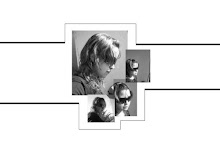
Language Learning & Technology
COMMENTARY: I'M ONLY TRYING TO HELP: A ROLE FOR INTERVENTIONS IN TEACHING LISTENING
Michael Rost
Listening activities are difficult to do in classes. There are different kinds of children and is a big challenge to know which activities are the best for everyone.
Three different studies are exposed on this article and they are related to ways of acquire the skill of listen.
The first one is ”Help options and multimedia listening” written by Grgurovic and Hegelheimer, which provide a study of input, task and feedback modifications. These authors promote language acquisition through the input interaction hypothesis, that is if interaction, specifically repair-motivated interaction promotes comprehension and if comprehension promotes acquisition, the integration promotes acquisition
The second article is called "Are They Watching?” Wagner provides a study of listener behavior in video-based test taking situations. The author provides a valuable survey of recent studies on the use of video to teach listening. Wagner leads up to the now axiomatic claim that multimedia experiences provide learners with richer, more authentic and more memorable encounters with the target language.
In the third article of this volume, "Using Digital Stories to Improve Listening Comprehension with Spanish Young Leaners of English", Ramirez and Alonso provide a contextualized study of young Spanish learners and a relatively innovative methodology. The study involves the use of a "project-based website" that offers graded content lessons in the form of games, songs, and stories.
COMMENTARY: I'M ONLY TRYING TO HELP: A ROLE FOR INTERVENTIONS IN TEACHING LISTENING
Michael Rost
Listening activities are difficult to do in classes. There are different kinds of children and is a big challenge to know which activities are the best for everyone.
Three different studies are exposed on this article and they are related to ways of acquire the skill of listen.
The first one is ”Help options and multimedia listening” written by Grgurovic and Hegelheimer, which provide a study of input, task and feedback modifications. These authors promote language acquisition through the input interaction hypothesis, that is if interaction, specifically repair-motivated interaction promotes comprehension and if comprehension promotes acquisition, the integration promotes acquisition
The second article is called "Are They Watching?” Wagner provides a study of listener behavior in video-based test taking situations. The author provides a valuable survey of recent studies on the use of video to teach listening. Wagner leads up to the now axiomatic claim that multimedia experiences provide learners with richer, more authentic and more memorable encounters with the target language.
In the third article of this volume, "Using Digital Stories to Improve Listening Comprehension with Spanish Young Leaners of English", Ramirez and Alonso provide a contextualized study of young Spanish learners and a relatively innovative methodology. The study involves the use of a "project-based website" that offers graded content lessons in the form of games, songs, and stories.
The author believes that the best way to help student to listen is provide comprhensible input, one of the Krashen's hypothesis, but not only this is needed to improve listening, the input has to be relevant, motivating and teachers have to plan interventions that can make the input comprhensible. Teachers have to do some interventions to catch the motivation of the students by advancing the listener's goals for listening.
To me, develop the skill of listening is too difficult, and is our responsability as a teachers to know how to develop it in students, according to the studies that I have read, the comprehensible input hypothesis is one of the best way to catch the attention of children, we have to add new knowledge step by step because student can acquire language in an easy way.
As the author says in the article, not only is necessary to use comprhensible input, we have to be able to create motivating input and also is important to do interventions as the author proposes. Technology is one of the best resource to motivate students and to do listening activities, because there are so many pages that permit you to interact with the computer and teachers have to provide of this intervention by working conciously in this important item.
To me, develop the skill of listening is too difficult, and is our responsability as a teachers to know how to develop it in students, according to the studies that I have read, the comprehensible input hypothesis is one of the best way to catch the attention of children, we have to add new knowledge step by step because student can acquire language in an easy way.
As the author says in the article, not only is necessary to use comprhensible input, we have to be able to create motivating input and also is important to do interventions as the author proposes. Technology is one of the best resource to motivate students and to do listening activities, because there are so many pages that permit you to interact with the computer and teachers have to provide of this intervention by working conciously in this important item.


No hay comentarios:
Publicar un comentario